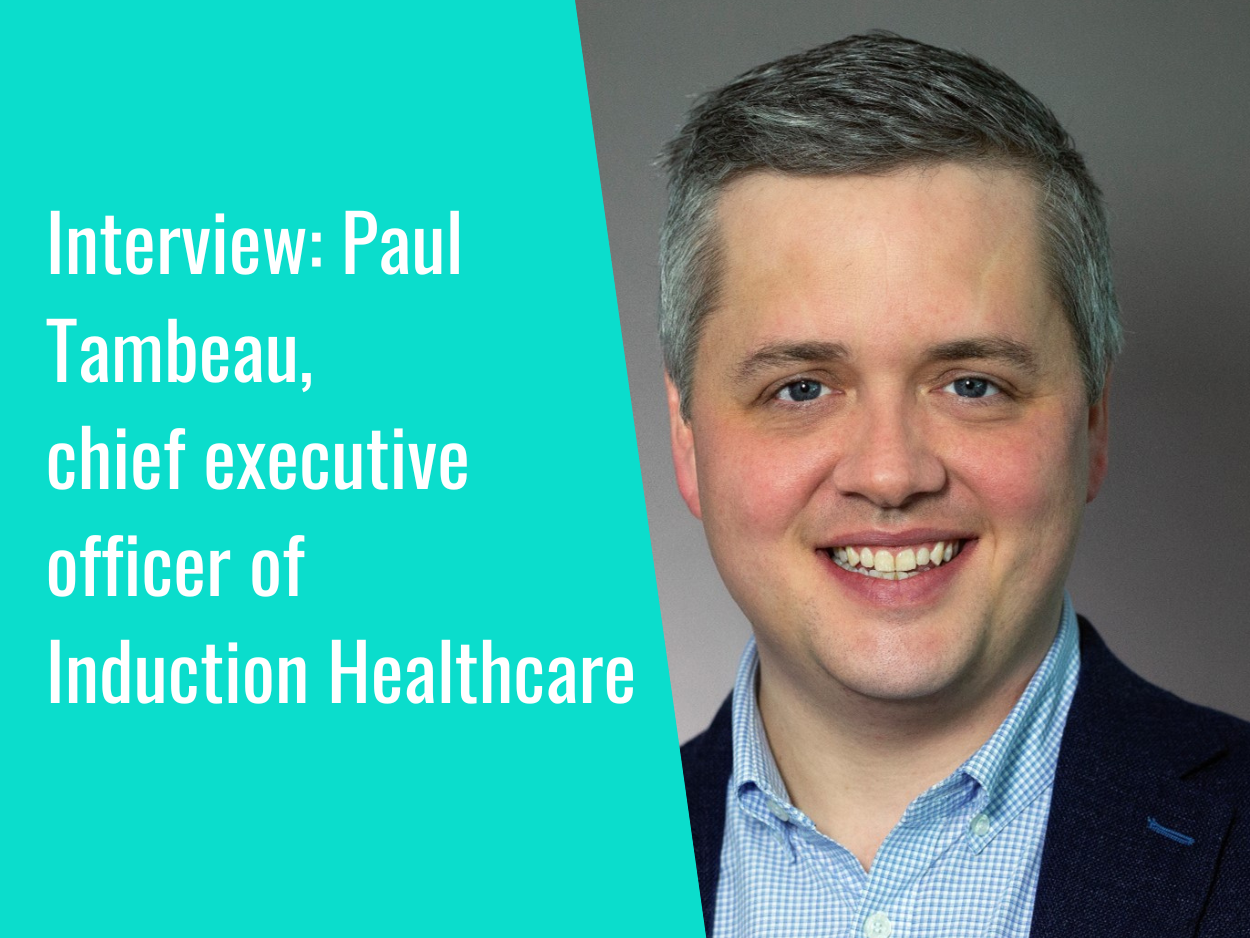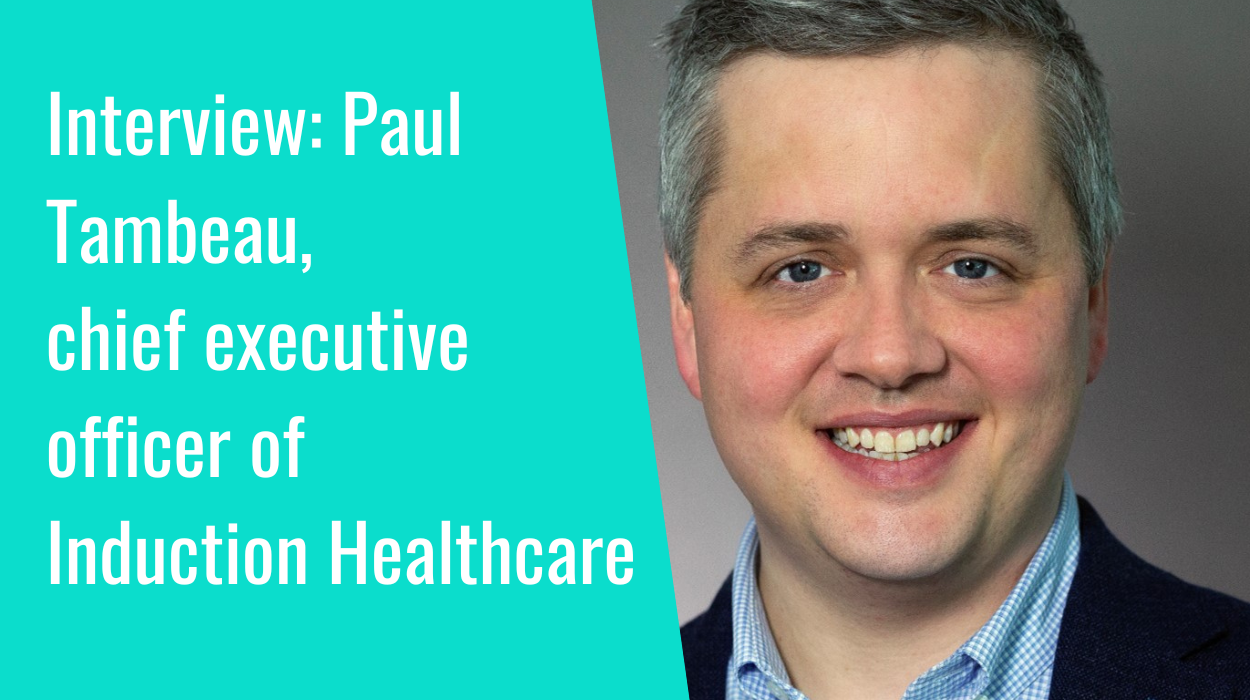
This week, we’re focusing on patient engagement portals. We spoke with Paul Tambeau, chief executive officer of Induction Healthcare, to hear his perspective.
Hi Paul, can you introduce yourself and tell me a bit about Induction Healthcare?
“At Induction Healthcare, we are at the forefront of delivering technology solutions that support interactions between care teams and patients in secondary care,” Paul explained. “We have a patient engagement portal called Zesty that is used across the NHS, a configurable questionnaire solution that is widely used for waitlist validation among other things, and we’re also the provider of Attend Anywhere, our video consultation platform that is used across Scotland, Wales and over 70 percent of England.”
How patient portals can support the backlog
“This is why we feel that the work we are doing is so important, because we know that over seven million patients are waiting for an appointment,” said Paul.
One of the main things that a portal can do is give patients choice, he said. “Portals let us empower patients and put information in their hands around their appointments, around the care that they are receiving. We’re increasingly seeing patients more willing to travel if it means that they can get seen sooner, so giving people information related to their appointment allows that to happen.”
With the healthcare system seeing a high number of people missing their appointments, Paul noted portals can also help to tackle the backlog by reducing the number of did-not-attends, as they provide people with the information around their appointments through their mobile device rather than in the form of a paper letter they might lose.
“On average, if you give patients the opportunity to go paperless, we’re seeing 67 percent of patients opt to do so,” Paul said. “That finding is somewhat consistent across the country. So making digital letters available in real-time helps patients stay on top of the most up-to-date information about their care, and also results in real cost savings for the NHS since letters aren’t having to be printed and posted.”
He added that Induction has built-in functionalities that write directly back to the hospital systems, reducing administrative burden for both patients and staff. This means people can in real-time cancel or reschedule their appointment freeing up administrative time. “Again, alongside tackling the backlog, it ties into patient empowerment. It helps them to take control of their appointment if the slot given is not suitable anymore.”
Another key area that portals can support is waitlist validation. “We’re seeing people on the waiting list who don’t require care anymore – they might be feeling better, for example, or perhaps they’ve pursued private care. Through portals, we can send out messages to patients asking if they still require their appointment and taking them through the validation process to make sure that that spot on the waiting list is taken up by someone who needs to be there.”
Then there’s the fact that people on the waiting list may not always need to be seen in person; Paul pointed out that where suitable, use of a video platform can allow individuals to stay at home and can also enable consultations to be completed more quickly.
Paul expanded on the appointment management functionality within Induction Healthcare’s portal, touching on the concept of patient-initiated follow-up, or PIFU. “You may have a condition where the consultant wants to monitor you, but they tell you to get in touch if you notice something or want to talk to someone,” he said. “Through the portal, patients can initiate that request if they need to, rather than being given a scheduled appointment that they may not need. The clinician can also use the portal to initiate that follow-up more quickly if they want to.”
He then brought the discussion back to video consultation platform Attend Anywhere, designed to support patients and clinician with convenience by allowing them to meet virtually where appropriate. “If you’re seeing someone in person, you might have to carve out 20 minutes to talk to them and understand how to help them,” Paul said. “But via video, this is often quicker, so it might just be 10 minutes that are needed. Not only has this saved the patient from making an unnecessary trip, those minutes of time saved for clinicians really add up.”
Taking part in the NHS Wayfinder programme
We’re involved with the NHS Wayfinder programme, which is designed to support patients and carers to access additional information about their elective care and hospital referrals via the NHS App – there are a number of portal providers who are part of the programme, and Induction Healthcare is one of two PEP providers to have piloted the rollout of additional features under the programme’s phase 2. That means we’re fully integrated with the NHS App.
Having the NHS App as that digital ‘front door’ to NHS services is a key priority for the health system, and our integration with the App means we’re well-placed to support the NHS with this. At the end of March, we had approximately one million patients signed up with Induction Zesty, our patient engagement platform. We switched on NHS App integration with ten of our customers, and that number rose to over two million patients within a couple of months.
We’re excited to continue with Wayfinder moving forwards – I think the integration with the NHS App is really important from a patient convenience perspective, and in terms of giving patients more control over their own care.
What do patients and staff need from portals?
For patients, Paul said, it is key that portals are easy to access and simple to navigate. “This is why we place emphasis on our integration with the NHS App – so it’s not a case of patients needing to access a separate system. The NHS App is also held to strict accessibility standards, which is really important.”
For staff, he continued, the needs are similar in terms of focusing on accessibility and ease of use. “It needs to be accessible within their existing workflows. We’ve done a lot of work around integrating the functionality into the underlying electronic patient record. Care teams don’t want to have to set up an appointment in one system, then go into another system to manage it.”
Paul also placed emphasis on security and safety, for both patients and staff. “We’re dealing with patient data and sensitive information – it’s critical that we meet very high standards of security.”




